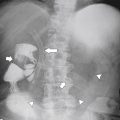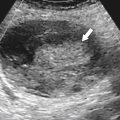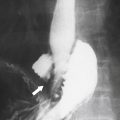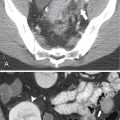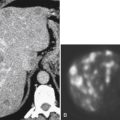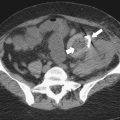html xmlns=”http://www.w3.org/1999/xhtml”>
Chapter 4
Small Bowel
Anatomy
The embryological development of the small bowel (midgut) is complicated, involving herniation into the umbilical cord and a 270-degree counterclockwise rotation before returning to the abdominal cavity. As a result, it is not surprising that there are several congenital rotation anomalies that can result in malrotation and volvulus and that emerge in the neonatal period, infancy, or even adulthood.
The small bowel is defined by the duodenum, jejunum, and ileum, but most radiologists refer to the small bowel as beginning at the ligament of Treitz (duodenojejunal flexure), which therefore consists of just the jejunum and ileum, ending at the ileocecal valve. The jejunum lies predominantly in the left side of the abdomen, whereas the ileum lies predominantly in the lower and right side of the abdomen. Other differences between the two include a thicker jejunal wall, and the valvulae conniventes are more compact in the jejunum. There is a richer vascular supply to jejunum via the small bowel mesentery that traverses the posterior abdominal wall in a direction from lower right to upper left. The ileum contains more lymphoid tissue, known as Peyer∗ patches. Arterial supply is via the superior mesenteric artery, and venous return is via the superior mesenteric and portal vein to the liver.

